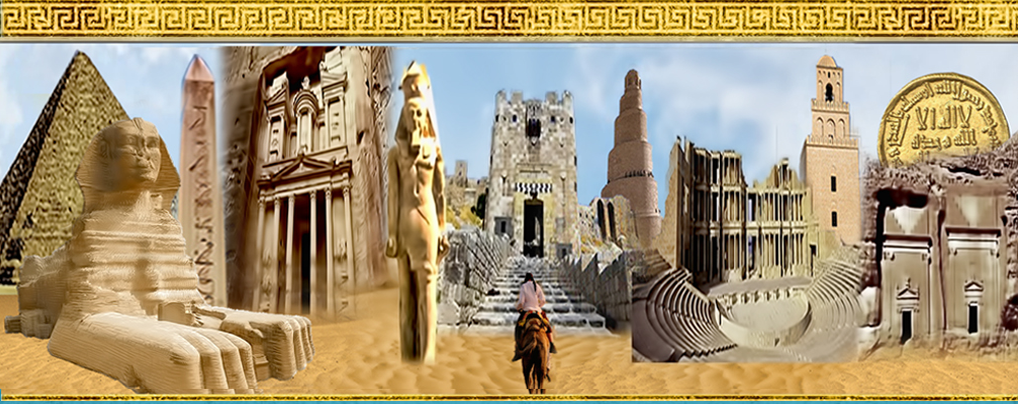Journal of the General Union of Arab Archaeologists

UNPUBLISHED GROUP RELIEFS [PORTRAIT STELAE AND GRAVE SCULPTURE] AT THE ASHMOUNIN STOREHOUSE IN MINYA
Abstract
مجموعة غير منشورة للنقوش البارزة (لوحات جنائزية وشواهد قبور) بمخزن الأشمونين المتحفى بالمنيا [Ar]
تتناول هذه الدراسة خمسة نماذج لشواهد قبور ولوحات جنائزية لم تنشر من قبل، ومحفوظة في مخزن الأشمونين المتحفى بالمنيا، وغير معلوم مصدرها، اثنان منهم على هيئة تماثيل بداخل ناووس أو مشكاة، وثلاثة عبارة عن تماثيل جنائزية مستقلة. يهدف هذا البحث إلى تقديم دارسة وصفية لهذه الشواهد واللوحات الجنائزية، تتبع بدراسة تحليلية مقارنة تتناول فيها مادة النحت، وتقديم رؤية واضحة للسمات الفنية لمعالجة تصوير هذه المجموعة، والأسلوب الفني المتبع في تنفيذ تماثيل المتوفين، والمتمثل في ملامح الوجه والزى والوقفة أضف إلى ذلك الكشف عن ماهية ومكانة أصحاب التماثيل، والرموز التي صورت معهم، والغرض منها. كما يعكس موضوع الدراسة صورة واضحة عن المدرسة الفنية التي أنتجت هذه المجموعة، لذا تأتى أهمية هذه الدراسة لتحديد مكان العثور عليها، ووضع تأريخ لها استنادا على كل هذه العناصر السابقة.
يتضح من خلال الدراسة أن شواهد القبور، واللوحات الجنائزية مُنفذة من مواد محلية، ومصورة على الطراز الروماني، ومتأثرة بالروح والأساليب الهلّنستية، كما أنها تنتمي إلى طبقة النخبة في المجتمع المصري خلال العصر الروماني، واتضح أيضا أنها منحوتة بجودة عالية، وخلص إلى أن شواهد القبور الجنائزية موضوع الدراسة تعود إلى العصر الروماني، خاصة في الفترة الممتدة من القرن الثاني إلى بداية القرن الرابع الميلادي. أيضاً تعكس الرموز المصاحبة للتماثيل الجنائزية مدى ارتباطهم بالطقوس الجنائزية، واعتقادهم في الخلود والحماية والحياة الأبدية.
[En] This study deals with five models of funeral tombstones and statues that have not been published before and are kept in the Ashmounin storehouse in Minya. Their origins are unknown. Two of them are statues inside a niche, and three of them are individual funerary statues. And provides a descriptive study of these funerary grave sculptures and statues, followed by a comparative analytical study dealing with sculpture. One goal is to provide a clear vision of artistic features. Another goal is to address the depiction of this group and its artistic style seen in its facial features, costume, and posture. Additionally, this study hopes to find the identity and status of the owners of the figurines, the symbols depicted with them, and their purpose. The subject of the study reflects a clear picture of the art school that produced the statues. The importance of this study is to determine where the statue group was found and to date it. The tombstones and funerary statues are made of local material, and depicted in the Roman style, which was influenced by the Hellenistic spirit and styles. The high quality of the carving makes it evident that the statues belonged to the elite class in Roman Egypt. The iconography included in the funerary statues reflects their connection with funeral rituals, and their belief in immortality, protection, and eternal life.
Recommended Citation
Darwish, Safaa Samir
(2023)
"UNPUBLISHED GROUP RELIEFS [PORTRAIT STELAE AND GRAVE SCULPTURE] AT THE ASHMOUNIN STOREHOUSE IN MINYA,"
Journal of the General Union of Arab Archaeologists: Vol. 8:
Iss.
2, Article 5.
Available at:
https://digitalcommons.aaru.edu.jo/jguaa/vol8/iss2/5
Included in
Historic Preservation and Conservation Commons, History Commons, History of Art, Architecture, and Archaeology Commons

